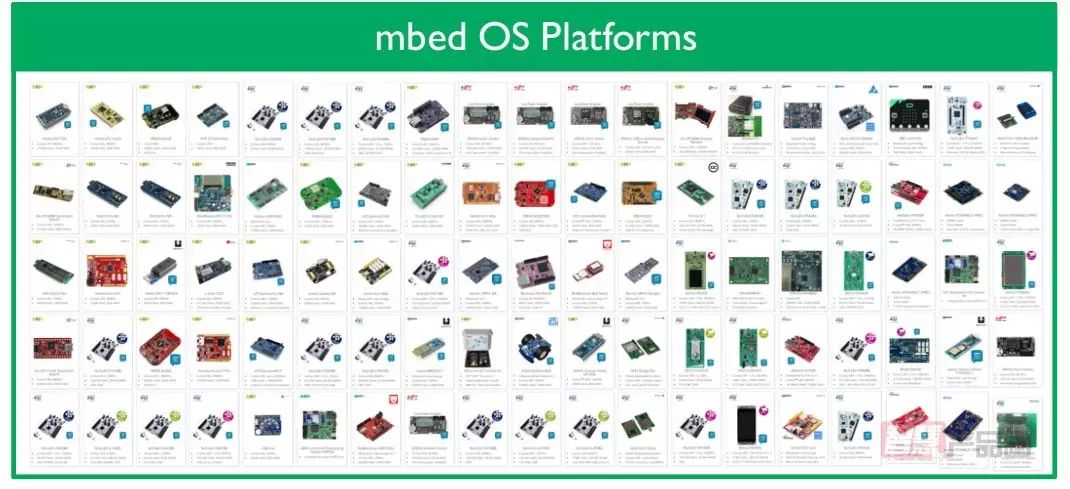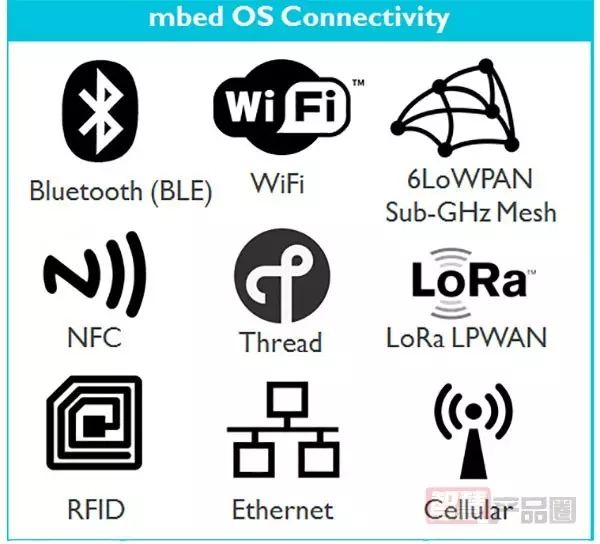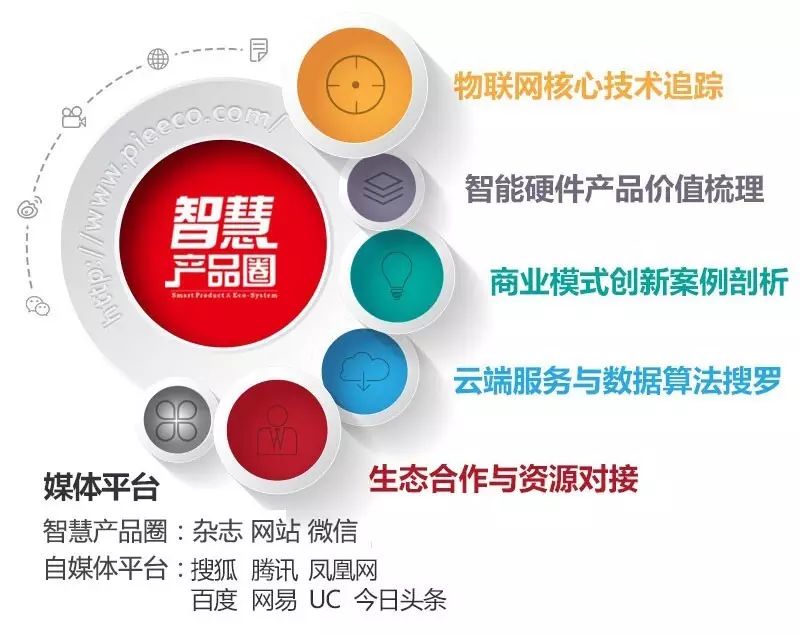

Introduction
From providing chip IP licensing to establishing its own development platform and device management platform mbed, ARM is planning and exploring business model transformation to cope with the changes of the IoT era. Currently, the mbed platform is merely a platform for technical exchange. If ARM’s mbed can become a trading platform for various application algorithms, meeting the demand for customized chip development, it will greatly promote the innovation and development of the entire smart hardware product ecosystem.
In the mobile internet era, ARM stood at the top of the industry by providing various series of CPU and GPU core IP licenses. Its technological advancements have driven the evolution of the entire industry. As the peak of mobile internet has passed and the era of IoT has arrived, ARM has launched a complete set of hardware development and device management platforms, ARM mbed, to respond to market trends.
01
Platform-based IoT Operating System mbed OS
In fact, ARM launched the open-source embedded operating system mbed OS for IoT applications back in 2014. This is a single-threaded architecture IoT operating system. With the development of the IoT, the demand for real-time operating systems (RTOS) that can handle multi-threading tasks has become increasingly important.
Recently, ARM has released the latest version of this operating system, mbed OS 5, which integrates the kernel of the real-time operating system CMSIS-RTOS RTX, enabling mbed OS to support deterministic, multi-threaded real-time programs, such as low-latency industrial automation control and vehicle networking.
mbed OS 5 can run on all Cortex-M series products and has good scalability. For applications with lower performance requirements, it can retain only the core functionalities of mbed OS 5, allowing it to run on Cortex-M0 chips with only 8K of memory.
For developers, the greatest convenience brought by mbed OS 5 is that it has a hardware abstraction layer (HAL), allowing developers to ignore hardware differences and easily port their development code to various platforms. mbed OS 5 has a consistent workflow across different hardware development boards, development hosts (Windows, Linux, MAC), and various development IDE environments.
For example, if a developer initially chooses Renesas’ MCU for development but later finds that another chip from ST is more suitable, they would need to redevelop due to the differences in API between the two manufacturers. With mbed OS 5, developers only need to develop once and can freely choose hardware platforms without redundant development. ARM provides over 60 mbed-enabled certified hardware solutions for developers to choose from, including more than 100 development boards and over 400 component libraries, covering mainstream chip manufacturers such as NXP, Atmel, ST, Renesas, etc.

(Click to view larger image)
There are over 200,000 registered developer users in ARM’s mbed developer community, who upload hardware-validated functional source code for others to use. This means that ARM has built mbed into an ecological platform that gathers developers, chip manufacturers, module providers, and development board suppliers, significantly lowering the development threshold, simplifying the development process, and accelerating product development and market launch cycles. For these hardware suppliers, mbed has also become a platform for promotion and sales.
Currently, mbed OS 5 supports various wireless communication protocols such as BLE, Wi-Fi, NFC, Thread, RFID, LoRa, and 6LoWPAN, and will support 802.15.4 Mesh and NB-IoT in the future. mbed OS 5 supports developers in the following three development methods:
1. Log in to ARM’s mbed website for online development;
2. Download the mbed CLI (command line interface) tool for offline development on their own computer;
3. Use third-party development tools; currently, mbed OS 5 supports KEIL, Eclipse, and IAR as third-party IDEs.

02
ARM’s Own Cloud mbed Cloud
ARM has also launched its own cloud platform, mbed Cloud, which offers a secure and stable IoT device management SaaS solution, ensuring secure data transmission from chips to the cloud and simplifying user device management. For example, if a user needs to perform system or firmware upgrades on terminal devices, they simply log into mbed Cloud, upload the system files or firmware programs, and mbed Cloud will handle the data communication with the terminal devices.
To ensure the security of communication between terminal devices and the cloud, ARM employs the mbed TLS tool, which is based on the SSL/TLS security transmission protocol, to encrypt communication data and uses the latest version of this protocol, TLS 1.2. With mbed Cloud, users can delegate the later management of devices to ARM while focusing on product development and functional upgrades.
mbed Cloud is a device cloud that does not store the operational data and collected data of terminal devices. Users still need to choose a third-party basic data cloud (such as Alibaba Cloud, Amazon AWS, etc.) for data processing and development. For instance, mbed Cloud will not save the user biometric data collected by a smartwatch but will transmit this data to a third-party cloud, with mbed Cloud serving merely as a transit station for this data.
This is because ARM is essentially still a technology-driven company rather than a data processing application service company. ARM does not compete with IaaS cloud companies like IBM Wasteland, Microsoft Azure, and Amazon AWS. Instead, mbed Cloud provides a secure data transmission solution from devices to these clouds.
03
From Technology to Platform
Observing the Industry Evolution through ARM’s Transformation
In both the internet and mobile internet eras, the entire industry development has been driven by technological advancements. ARM, which provides foundational core chip IP technology, rapidly rose with the wave of mobile internet. During this stage, ARM was quite distant from the end product application market. ARM also did not need to concern itself with changes in the product application market, as shifts in smartphone brand market shares had little impact on ARM’s technology development.
However, in the era of IoT, the complexity and fragmentation of the market have made the application of technology no longer certain. An ARM marketing employee mentioned in an interview with Smart Product Circle (pieeco) that their developed Cortex-M series processors were unexpectedly used in wearable devices, which was not anticipated during development.
In fact, with the continuous development of IoT, the market evolution is gradually shifting from technology-driven to application-driven. All players in the entire industry chain must care about where the final application of the product lies and what the essential needs of the users are. User needs determine product definitions, and product definitions determine technology development.
ARM is no exception. The launch of the mbed platform can help smart hardware product developers simplify the development process, accelerate development cycles, and improve device management efficiency. On the other hand, for ARM, this platform allows it to constantly monitor the development trends of the product application market and gather feedback from product developers on this platform and ARM technology, which can help ARM improve its technology and guide the direction of next-generation technology research and development. Otherwise, deviating from user needs, leading to advanced technology not being applied, is merely a waste.
However, the current mbed platform is still merely a platform for technical exchange; ARM could do much more. For example, Renesas recently launched its own Synergy platform, where developers can purchase third-party reference design solutions (patented algorithms) verified by Renesas MCU for application innovation. Renesas has turned Synergy into a distribution channel for application algorithms.
If ARM’s mbed can also emulate Renesas and create a third-party application algorithm exchange platform, developers of application integration solutions will have a broader choice of hardware. In the future, customized algorithm development for specific application scenarios will become increasingly common. Therefore, there is also a need for customized chip development to realize such customized algorithms. If ARM’s mbed platform can become a trading platform for various application algorithms, meeting the demand for customized chip development, it will greatly promote the innovation and development of the entire smart hardware product ecosystem. ARM mbed will not only be a technical exchange platform but also a platform for application innovation.
*This article is an original piece from Smart Product Circle. If reprinted, please indicate the source: “Reprinted from ‘Smart Product Circle’ (pieeco)”; otherwise, legal action will be pursued.

From May 18 to 20, 2017, CSHE/CICE will make a strong appearance at the Shenzhen Convention and Exhibition Center. The exhibition will focus on smart life application scenarios, combined with new products and service implementation cases, deeply exploring industry application needs, laying a solid foundation for promoting the healthy and rapid development of China’s smart industry. (Click the bottom of the article to read the original text for free registration!!)
About Us
Smart Product Circle is under Sirida Media, the only emerging media in China dedicated to building a smart home IoT ecosystem, providing comprehensive services:


Click “Read Original” to get the 2017 China Smart Home Expo & Shenzhen (International) Integrated Circuit Technology Innovation and Application Exhibition free registration entrance:
